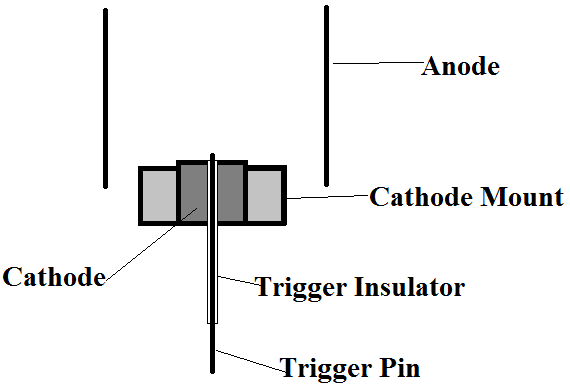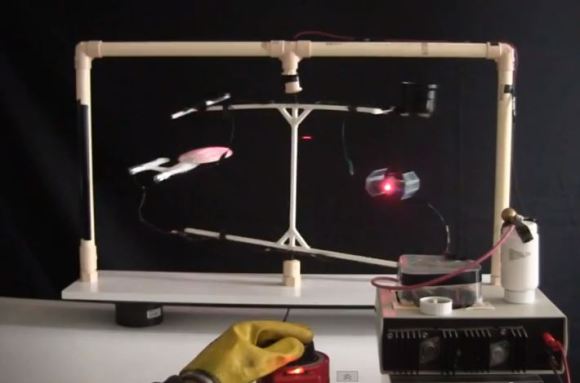Small pinwheel type ion motors fall into the category of a fun science experiment or something neat to do with high voltage, but Hackaday’s own [Manuel Rodriguez-Achach] added a neat twist that incorporates neon lamps.
Normally you’d take a straight wire and make 90 degree bends at either end but pointing in opposite directions, balance it on a pole, and apply a high voltage with a moderate amount of current. The wire starts spinning around at the top of the pole, provided the ends of the wire are sharp enough or the wire has a small enough diameter. If your power supply has ample current available then in the dark you’ll even see a purplish glow, called a corona, at the tips of the wire.
[Manuel] made just such an ion motor but his power supply didn’t have the necessary current to produce a strong enough corona to be visible to his camera. So he very cleverly soldered neon lamps on the two ends of the wires. One leg of each lamp goes to the wire and the other end of the lamp acts as the sharp point left out in the air for emitting the ions.
The voltage needed across each lamp in order to ignite it is that between the high voltage power supply’s output and the potential of the surrounding air. That air may be initially at ground potential but he also bends the other output terminal of the power supply such that its tip is also up in the air. This way it sprays ions of the opposite polarity into the surrounding air.
Either way, the neon lamps light up and the wire spins around on the pole. Now, even without a visible corona, his ion motor makes an awesome display. Check it out in the video below.
For more about these ion motors, sometimes called electric whirls, check our article about all sorts of interesting non-electromagnetic motors.


















